The Spectacular Blanc Moussis of Stavelot (No.48)
Last week President Obama visited Brussels for the first time and met with the EU leaders and the Secretary General of NATO. Though the visit was just short of a day, there was a large interest among the Belgian people, also because of the Ukraine issue. I received an invitation to his speech at Bozar in Brussels and got to hear him speak. It was the second time for me to hear first-hand a speech by President Obama – previously in Chicago, more than 10 years ago. President Obama was still a professor at the University of Chicago at the time and had just started to run for the primary elections to be selected as a candidate for the Democratic Party for the Senate seat from Illinois State. That time I was working as Consul General in Chicago and happened to attend a campaign rally of candidate Obama in my efforts to get an idea of the reality of the US elections. In those days Mr Obama was not known at all as a politician even in Illinois. As an African-American candidate he gathered some attention, but I remember him being a rather dark horse in the Senate candidate selection for the Democratic Party. As my only impression at the campaign rally was that he was a good public speaker, I never thought that he would become the President of the United States five years later. Last week while listening to the impressive speech of President Obama now in the second term of his presidency, I felt some kind of deep emotion of 10 years having passed by so quickly. At the time of his campaign rally in Chicago I could easily enter the venue. This time however, I arrived at the venue on foot due to severe traffic restrictions. It took 30 minutes to pass the security gate and it took another 2 hours until the speech started since I got to sit down. I luckily read some books to pass the time during the long wait as a friend advised me to do so.
<Cartamundi and the Cards Museum>
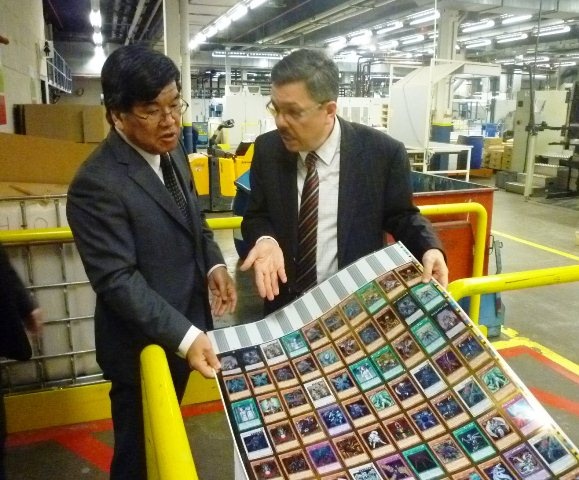 In the North-eastern part of Belgium there is the small town of Turnhout with a population of about 40,000 people. About 84km away from Brussels, it takes about an hour and a half by car because there is no straight route. This town is known as the “mecca of playing cards” worldwide. The company Cartamundi produces about 15% of the world’s playing cards’ volume and the annual sales amount is close to 150 million euros. Of course they do not only produce playing cards, but they have a broad array ranging from collectable character cards from Bandai and Takara Tomy for kids, to coin chips used in casinos. At the joint venture with the Japanese Amada Group at the end of last year it was agreed to establish a new factory (78 employees) in Sōka, Saitama. Up to now Cartamundi exported its Belgian products to Japan, but since last year export is less profitable due to the weak yen, so they decided to produce them in Japan in cooperation with Amada Group, a leading Japanese card company. Cartamundi has factories and retailers worldwide with a total workforce of 1350 employees, of which 320 people are employed at the Turnhout headquarters. I was told that it was 2005 when Cartamundi became the number one card company in the world, and they are aiming now to become the world’s reference. In the North-eastern part of Belgium there is the small town of Turnhout with a population of about 40,000 people. About 84km away from Brussels, it takes about an hour and a half by car because there is no straight route. This town is known as the “mecca of playing cards” worldwide. The company Cartamundi produces about 15% of the world’s playing cards’ volume and the annual sales amount is close to 150 million euros. Of course they do not only produce playing cards, but they have a broad array ranging from collectable character cards from Bandai and Takara Tomy for kids, to coin chips used in casinos. At the joint venture with the Japanese Amada Group at the end of last year it was agreed to establish a new factory (78 employees) in Sōka, Saitama. Up to now Cartamundi exported its Belgian products to Japan, but since last year export is less profitable due to the weak yen, so they decided to produce them in Japan in cooperation with Amada Group, a leading Japanese card company. Cartamundi has factories and retailers worldwide with a total workforce of 1350 employees, of which 320 people are employed at the Turnhout headquarters. I was told that it was 2005 when Cartamundi became the number one card company in the world, and they are aiming now to become the world’s reference.
By the way, there is a National Playing Card Museum in Turnhout which I visited for a brief 30 minutes. The history from the start of the 19th century of the production of playing cards is clearly explained and laid out. A wood-block printing machine from that period is also on display. I was surprised that in the mid-19th century, which corresponds to the end of the Edo-period in Japan, ‘hanafuda’ (a deck of Japanese playing cards with 12 suits of 4 cards, each suit representing a month of the year signified by a flower), ‘hyakunin isshu’ playing cards and print-cards of a kabuki actor called ‘suderoku’ were manufactured here on assignment. It is guessed that trades were made through the Dutch Merchant House at Deshima in Nagasaki, Japan. Turnhout was one of the worldwide centres for card production back then…
<Two Unique Japanese Companies – Amano and Ariake>
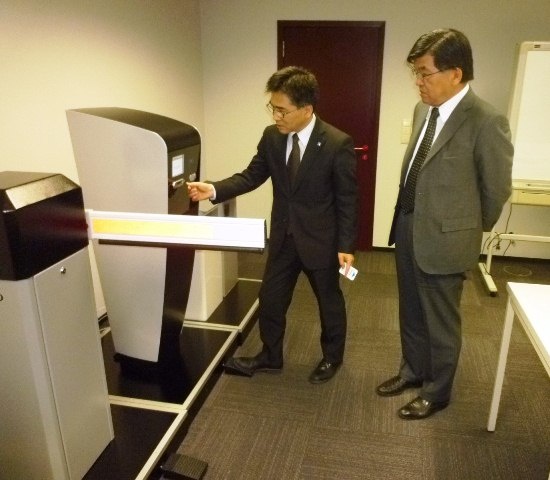 Last month I visited unique Japanese companies in the North-eastern part of Belgium. The first one I visited was the main office of Amano Europe Holdings in the city of Genk – a company providing work management systems and parking management equipments and software. There are 465 employees in total, 31 in Genk of whom 4 Japanese. After the founding of the sales company in 1972 in Brussels, a factory was established in 1989 in Genk where time recorders were manufactured for more than 10 years, but due to low cost goods from China the production department was forced to close down. Currently the company sells work, payroll and HR management systems (software), holding a 5% share in the European market, but due to differences in labour laws across countries in the EU it is difficult to support one single system. I was told that as for their sales of parking equipments and software the company’s goal is just to expand even further. The main office of Amano Ltd in Yokohama was established in 1931, has 4240 employees and the annual sales amount to more than 640 million euros. Last month I visited unique Japanese companies in the North-eastern part of Belgium. The first one I visited was the main office of Amano Europe Holdings in the city of Genk – a company providing work management systems and parking management equipments and software. There are 465 employees in total, 31 in Genk of whom 4 Japanese. After the founding of the sales company in 1972 in Brussels, a factory was established in 1989 in Genk where time recorders were manufactured for more than 10 years, but due to low cost goods from China the production department was forced to close down. Currently the company sells work, payroll and HR management systems (software), holding a 5% share in the European market, but due to differences in labour laws across countries in the EU it is difficult to support one single system. I was told that as for their sales of parking equipments and software the company’s goal is just to expand even further. The main office of Amano Ltd in Yokohama was established in 1931, has 4240 employees and the annual sales amount to more than 640 million euros.
 On the same day the next visit was to food company Ariake Europe in Maasmechelen which produces and sells natural liquid seasoning. It is still a new company founded in Belgium in 2004 (and a factory in 2008), currently employing 50 employees of whom 3 Japanese. The main office in Tokyo, Ariake Japan (its main factory is located in Nagasaki Prefecture) was established in 1966 and under its motto of ‘creating the taste industrially equal to restaurant chefs’ they produce soups from chicken bones, etc. and a variety of sauces for cooking. Its market is mainly targeted towards traders (B to B) and not to individual consumers. Therefore the general public is not really familiar with the brand name Ariake, but besides selling soup wholesale to Japan’s famous ramen chain stores, the majority of the mini sauce packets in lunchboxes at convenience stores and the instant powder soups attached to instant noodles are made by Ariake. When I asked why Ariake established the factory in the countryside town of Maasmechelen, it was explained to me that the local government had set up an excellent investment environment and that the procurement of raw materials was easy. At first most of the company’s products were exported to Japan, but recently the sales in Europe have increased up to 50%. On the same day the next visit was to food company Ariake Europe in Maasmechelen which produces and sells natural liquid seasoning. It is still a new company founded in Belgium in 2004 (and a factory in 2008), currently employing 50 employees of whom 3 Japanese. The main office in Tokyo, Ariake Japan (its main factory is located in Nagasaki Prefecture) was established in 1966 and under its motto of ‘creating the taste industrially equal to restaurant chefs’ they produce soups from chicken bones, etc. and a variety of sauces for cooking. Its market is mainly targeted towards traders (B to B) and not to individual consumers. Therefore the general public is not really familiar with the brand name Ariake, but besides selling soup wholesale to Japan’s famous ramen chain stores, the majority of the mini sauce packets in lunchboxes at convenience stores and the instant powder soups attached to instant noodles are made by Ariake. When I asked why Ariake established the factory in the countryside town of Maasmechelen, it was explained to me that the local government had set up an excellent investment environment and that the procurement of raw materials was easy. At first most of the company’s products were exported to Japan, but recently the sales in Europe have increased up to 50%.
<The Blanc Moussis of Stavelot>
 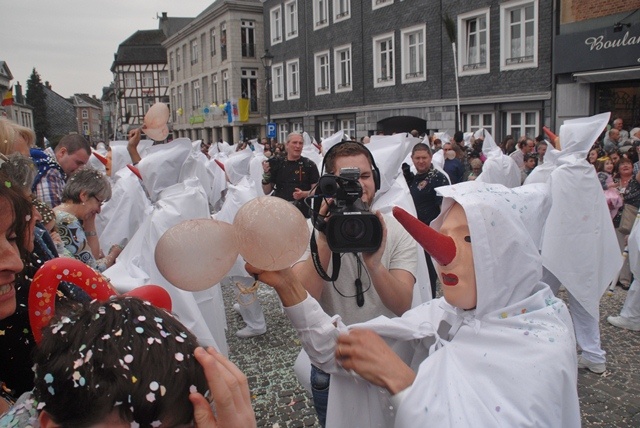 Belgium in March is the carnival season; each city that organises a carnival seems to be competing for the history of the event and its uniqueness. The Blanc Moussis (meaning ‘clad in white’) Carnival of Stavelot is the epitome of such a unique festival. Stavelot is a small town situated about 160km to the east of Brussels near the German border with a population of 6,800 – a seemingly quiet place, hurled up in between the river valley of the Ambleve. The town has a long history, dating back to the Benedictine abbey erected by Saint Remaclus in the mid-7th century. From then on the whole town operated as a semi-independent state until the end of the 18th century as a religious city. This town bears one more anecdote, namely, the French poet Apollinaire stayed in this town at the end of the 19th century where he fell in love with a local girl and thus left many love poems behind. Those poems are still on display in the city museum. Belgium in March is the carnival season; each city that organises a carnival seems to be competing for the history of the event and its uniqueness. The Blanc Moussis (meaning ‘clad in white’) Carnival of Stavelot is the epitome of such a unique festival. Stavelot is a small town situated about 160km to the east of Brussels near the German border with a population of 6,800 – a seemingly quiet place, hurled up in between the river valley of the Ambleve. The town has a long history, dating back to the Benedictine abbey erected by Saint Remaclus in the mid-7th century. From then on the whole town operated as a semi-independent state until the end of the 18th century as a religious city. This town bears one more anecdote, namely, the French poet Apollinaire stayed in this town at the end of the 19th century where he fell in love with a local girl and thus left many love poems behind. Those poems are still on display in the city museum. 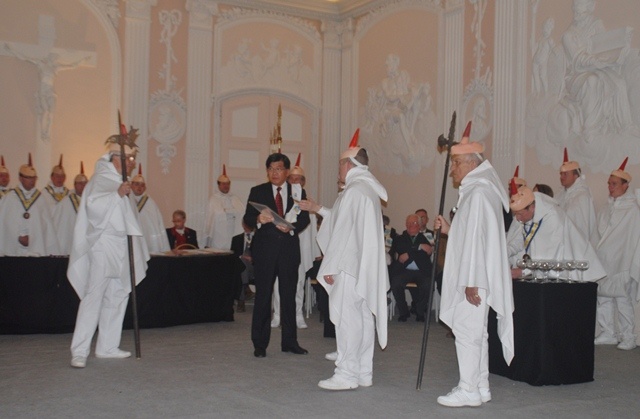 The day before yesterday on Sunday I was invited by a prominent person of the city to the Blanc Moussis Carnival and spent almost the entire day in Stavelot with my wife. The parades in the afternoon were full of fancy costumes followed by the parade of close to 200 men in white clothing with long red-nosed masks. It is said to have its backstory in tales about poor monks, but the sight of the parade throwing about 3 tonnes of confetti and marching forward while slapping the spectators with balloons made from pig bladders is rather odd. That day I was treated as an official guest and that evening I was even made an honorary member by the Blanc Moussis Brotherhood through a ceremony that was held in one of the rooms of the abbey of Saint Remaclus. I was surprised by the rituals as if joining a secret society. Afterwards a banquet was given in the same abbey until late into the night. I excused myself halfway through and stated that “today has been full of surprises and I would like to give my thanks to the locals who have been really kind from start to finish. It was my first time visiting Stavelot, but I assure it certainly will not be the last”. In my one-and-a-half year stay in Belgium this day has been the most memorable so far. The day before yesterday on Sunday I was invited by a prominent person of the city to the Blanc Moussis Carnival and spent almost the entire day in Stavelot with my wife. The parades in the afternoon were full of fancy costumes followed by the parade of close to 200 men in white clothing with long red-nosed masks. It is said to have its backstory in tales about poor monks, but the sight of the parade throwing about 3 tonnes of confetti and marching forward while slapping the spectators with balloons made from pig bladders is rather odd. That day I was treated as an official guest and that evening I was even made an honorary member by the Blanc Moussis Brotherhood through a ceremony that was held in one of the rooms of the abbey of Saint Remaclus. I was surprised by the rituals as if joining a secret society. Afterwards a banquet was given in the same abbey until late into the night. I excused myself halfway through and stated that “today has been full of surprises and I would like to give my thanks to the locals who have been really kind from start to finish. It was my first time visiting Stavelot, but I assure it certainly will not be the last”. In my one-and-a-half year stay in Belgium this day has been the most memorable so far.
<Bastogne War Museum>
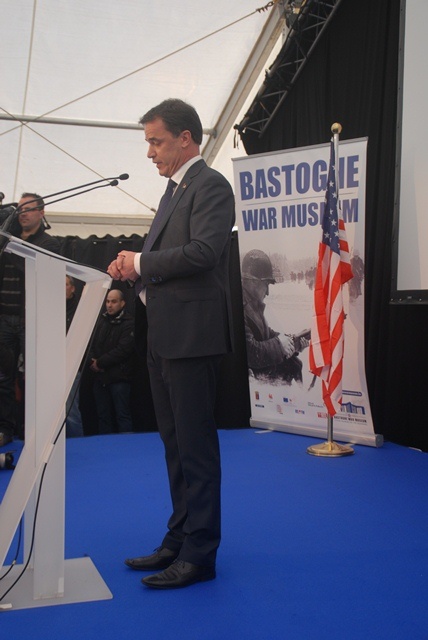 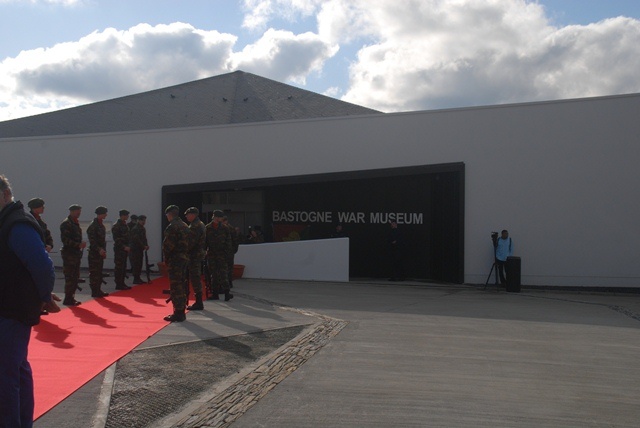 150km to the South-east of Brussels, located on a 500m high plateau, lies the small town of Bastogne (15,000 inhabitants). Besides being known for its walnuts and Ardennes ham, at first glance the town seems rather ordinary, but Bastogne became known around the world as the largest battlefield of the Ardennes Offensive at the end of World War II where in 1944 the Americans and Germans fought a fierce battle. 90,000 American soldiers joined the war of which 19,000 died in battle. After the war a Historical Centre was built to keep the memories of the war alive. Just recently, after a three-year complete renovation, the new museum made a fresh start under the name of the ‘Bastogne War Museum’. Yesterday I attended its opening ceremony on invitation of Mayor Benoit Lutgen. This year marks the 100-year anniversary of the beginning of the First World War and all over Belgium many commemorations are being held. In relation to the Second World War, this year marks the 70th anniversary of the ‘Ardennes Offensive’. I attended both ceremonies and it is surprising that although only 30 years had passed between both wars, the way of warfare had changed dramatically. Almost all of the people of the time of the Great War have passed away, but as for World War II, many people are still alive and one can still see war veterans of over 90 years old. Belgium, which was the scene of battle of the two Wars, will not likely forget the memories of those wars. 150km to the South-east of Brussels, located on a 500m high plateau, lies the small town of Bastogne (15,000 inhabitants). Besides being known for its walnuts and Ardennes ham, at first glance the town seems rather ordinary, but Bastogne became known around the world as the largest battlefield of the Ardennes Offensive at the end of World War II where in 1944 the Americans and Germans fought a fierce battle. 90,000 American soldiers joined the war of which 19,000 died in battle. After the war a Historical Centre was built to keep the memories of the war alive. Just recently, after a three-year complete renovation, the new museum made a fresh start under the name of the ‘Bastogne War Museum’. Yesterday I attended its opening ceremony on invitation of Mayor Benoit Lutgen. This year marks the 100-year anniversary of the beginning of the First World War and all over Belgium many commemorations are being held. In relation to the Second World War, this year marks the 70th anniversary of the ‘Ardennes Offensive’. I attended both ceremonies and it is surprising that although only 30 years had passed between both wars, the way of warfare had changed dramatically. Almost all of the people of the time of the Great War have passed away, but as for World War II, many people are still alive and one can still see war veterans of over 90 years old. Belgium, which was the scene of battle of the two Wars, will not likely forget the memories of those wars.
|